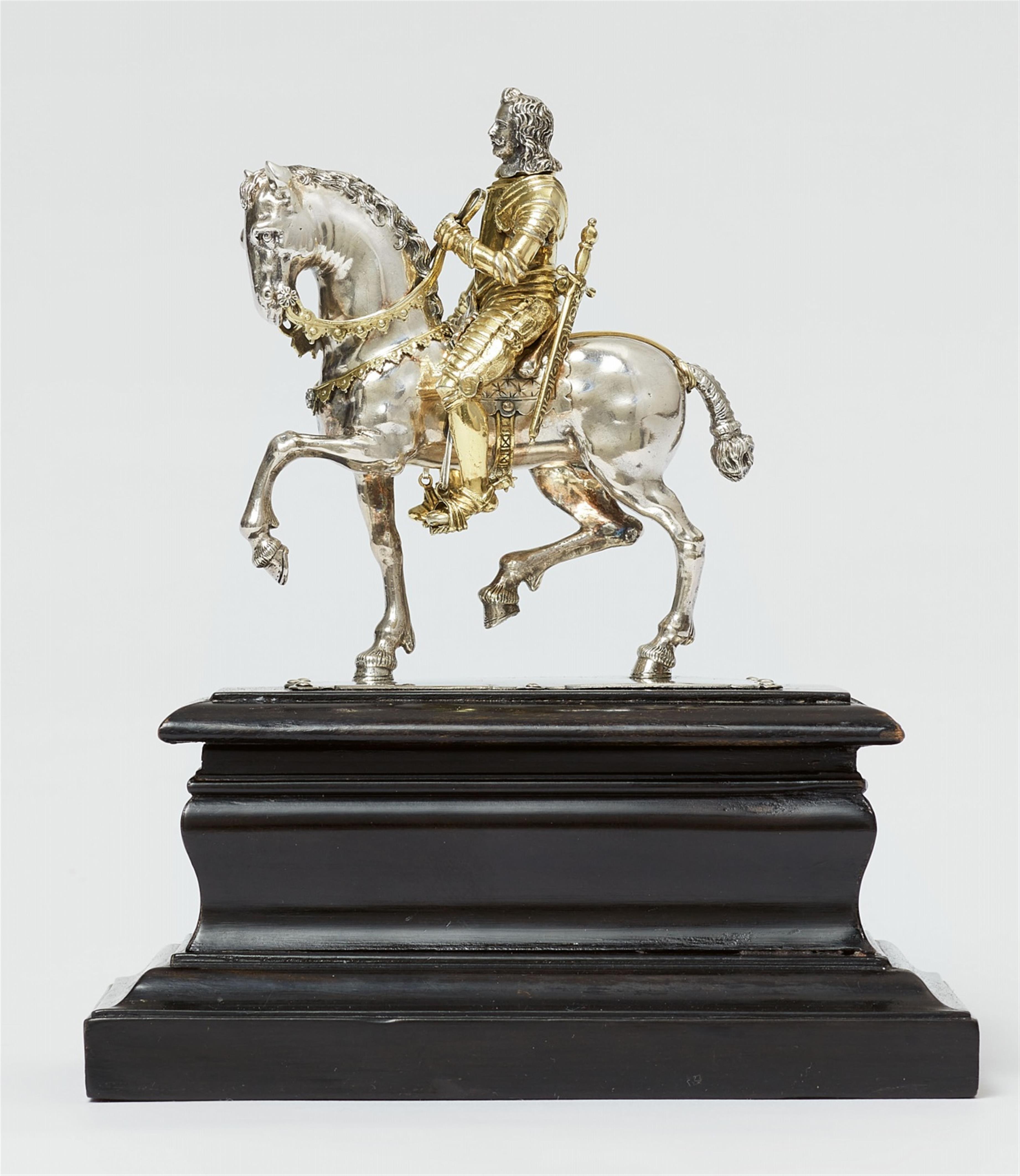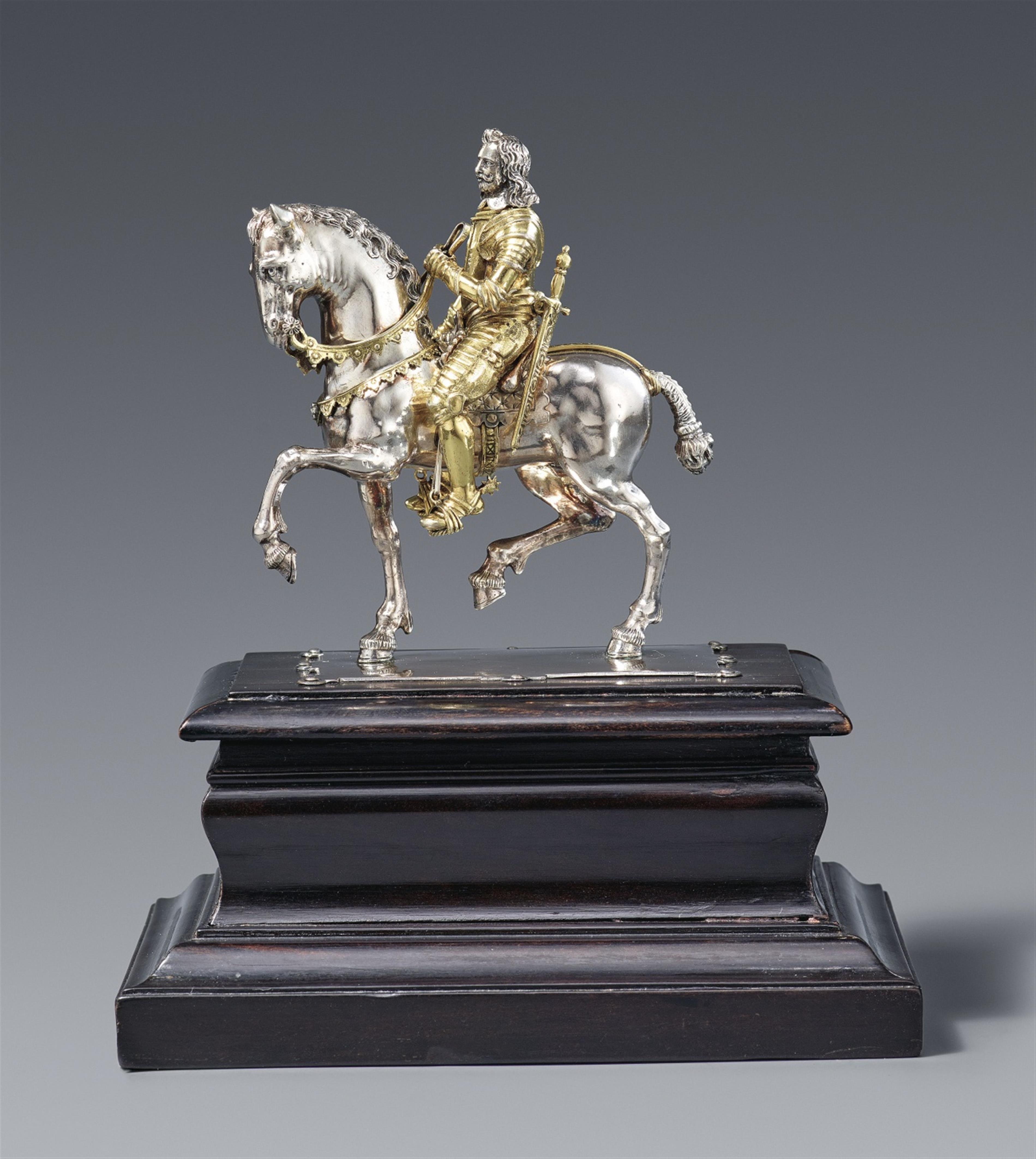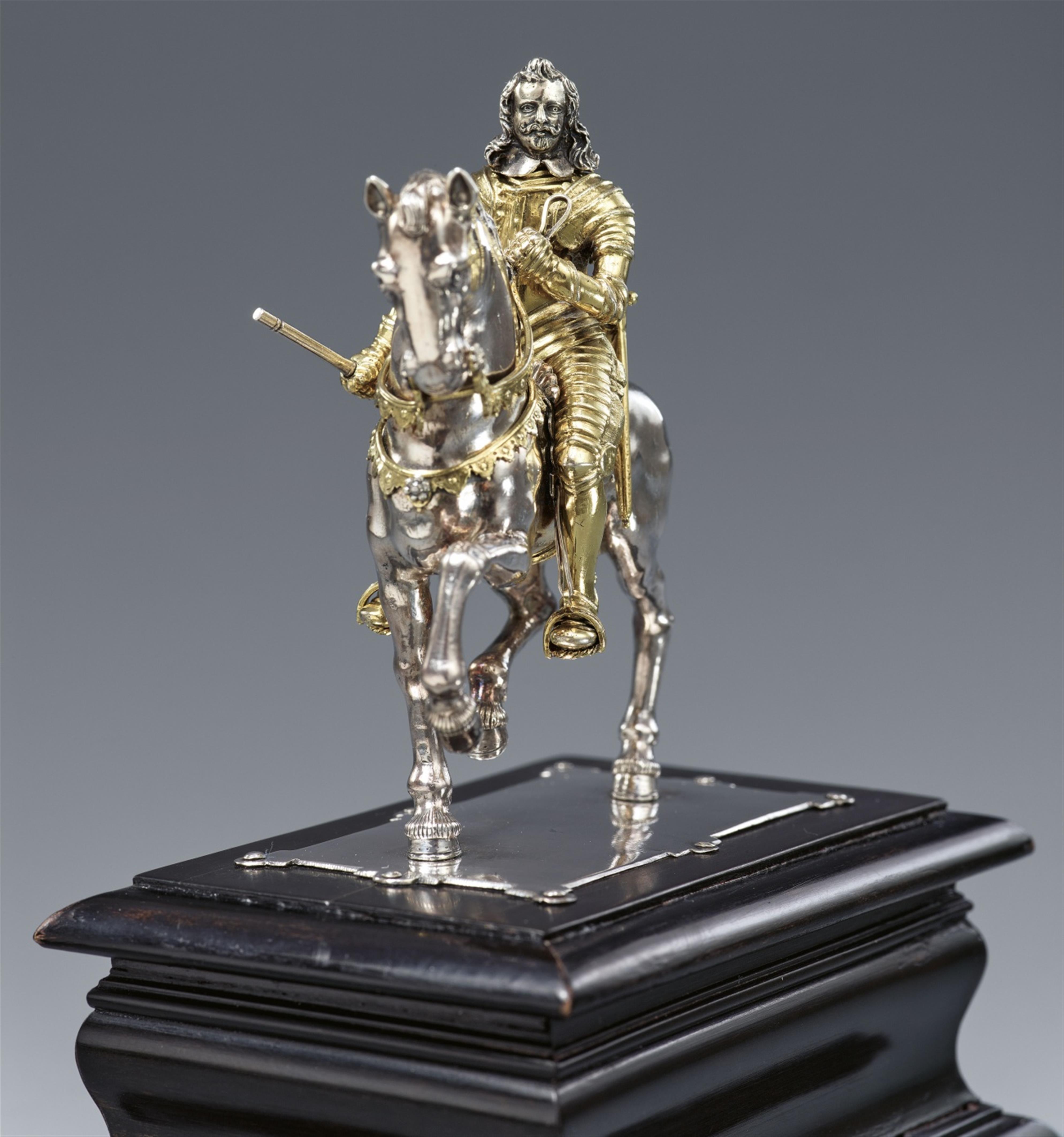A small silver equestrian statue Emperor Ferdinand III
Depicted in armour and on horseback with his head bare, holding the sceptre in his right hand and the reins in his left. The sword on the back left is attached via and hinge. The horse is depicting at a trot with a finely chased bridle and a braided tail, attached to the plinth on two feet. The plinth is in turn attached to the base via eight nails. H 8.3 cm, H with plinth 13.8, W 8.3, D 12 cm, weight with plinth 328 g.
Attributed to Augsburg, circa 1637.
Comparable equestrian statuettes can be found in the Grünes Gewölbe in Dresden, the Rijksmuseum in Amsterdam, in Kassel, and in the treasury of Burg Eltz. The works are almost identical, except for the Kassel example which adorns the lid of an ostrich egg cup and in which the horse is depicted in mid jump. Apart from this one, all pieces depict the horses at a trot, with the rider wearing the same armour and holding the reins and sceptre. All horses have the same finely chased mane, and in all pieces the armour and bridle are gilded, while the head and body of the horse are left silver. The size and weight also vary only by centimetres. In another specimen kept in the Herzog Anton Ulrich Museum in Braunschweig, the horse's body is enamelled in naturalistic colours. The screw-top head is also common to all figures. Of all the statuettes mentioned, only the one presented here depicts Emperor Ferdinand III; the other pieces portray his father, Emperor Ferdinand II. (1578 – 1637), who was Holy Roman Emperor from 1619 until his death in 1637. His son, born in 1608, also reigned as Ferdinand III from 1637 until his death in 1657.
The removable screw-mounted head is the most astonishing design feature of all the statuettes. The screw thread is not a later addition, the objects were intentionally designed so that the head could be replaced. From this we can conclude that the small equestrian statuettes served as symbols of the Habsburg regency, but not to glorify individuals depicted.
Another interesting feature is the absence of hallmarks. Only the Kassel example with the prancing horse bears the hallmark of the Nuremberg goldsmith Hans I Clauß from 1630. His surviving works include a number of exceptionally splendid vessels, nautilus goblets, an ostrich egg goblet and a drinking vessel designed as a ship with wheels – all with rich sculptural decor. He obviously specialized in cast silver figures. Clauß passed his master's examination in 1627, during the reign of Ferdinand II. The last of his published nautilus goblets is dated 1645/ 51, which proves that he was still active during the reign of Ferdinand III. It is possible that these figures originate from his workshop.
Literature
Cf. Pit, Catalogus van het goud- en zilverwerk in het Nederlandsch Museum voor Geschiedenis en Kunst te Amsterdam, Amsterdam 1902, p. 50, no. 118. Cf. Catalogus van goud en zilverwerken, benevens zilveren, loden en bronzen plaquetten, Rijksmuseum Amsterdam 1952, p. 55, no. 188. Cf. Schütte, Die Kostbarkeiten der Renaissance und des Barock: 'Pretiosa' und 'allerley Kunstsachen' aus den Kunst- und Raritätenkammern der Herzöge von Braunschweig-Lüneburg aus dem Hause Wolfenbüttel, Braunschweig 1997, p. 35 ff, no. 8, p. 254. Cf. The equestrian statue of Arch Duke Leopold V, attributed to Caspar Gras, made before 1630, in KHM Vienna, inv. Kunstkammer, 968. For more on Hans I. Clauß see Tebbe/Timann/Eser et alii, Nürnberger Goldschmiede 1541 - 1868, vol. I Meister-Werke-Marken, Nuremberg 2007, no. 123, p. 82 ff.






